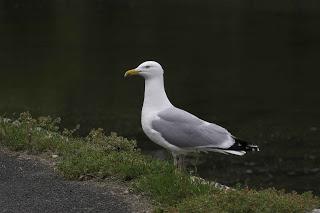
© BTO
As many urban-dwellers know, large gulls have increasingly been nesting and feeding in towns and cities in recent decades. This has brought them into conflict with many people, who dislike the noise and mess associated with gulls, not to mention the threat of having their ice creams and chips stolen. The results from the GPS tags revealed huge variation in the movements and feeding habits of the four individuals tracked, but showed that none of them spent much time in the streets of St Ives, suggesting they did not habitually feed on food waste or snatch ice creams. Instead, two birds were true “seagulls”, spending much of their time more than 30km out to sea, whereas the remaining two rarely went more than 1km from the shore. All birds visited farms close to St Ives, where their movements indicated that they apparently followed a plow or a harvester.Peter Rock, lead author of the study said,“We have two populations of the large gulls in UK – the rural and the urban. We know a great deal about rural gulls, but because they have been under-studied, our knowledge of urban gulls is nowhere near as good as it should be. In view of the bad press surrounding urban gulls, it’s a situation that must change and this small study points the way.”
Dr Viola Ross-Smith, BTO, said,“This study demonstrates that gulls behave as individuals and there can be no one size fits all approach when it comes to managing their populations. It is vital that any decisions about gull conservation and management are based on the best scientific evidence available if they are to succeed.”
Although gulls appear to be thriving in urban areas, many species are in decline nationally, including the Herring Gull, which is on the Birds of Conservation Concern Red List. Future work will now build on this study, helping us to understand the success of urban gulls, the conservation needs of gulls breeding in rural colonies, and to come up with sustainable management strategies for co-existing with gulls as feathered friends, rather than fiends.

